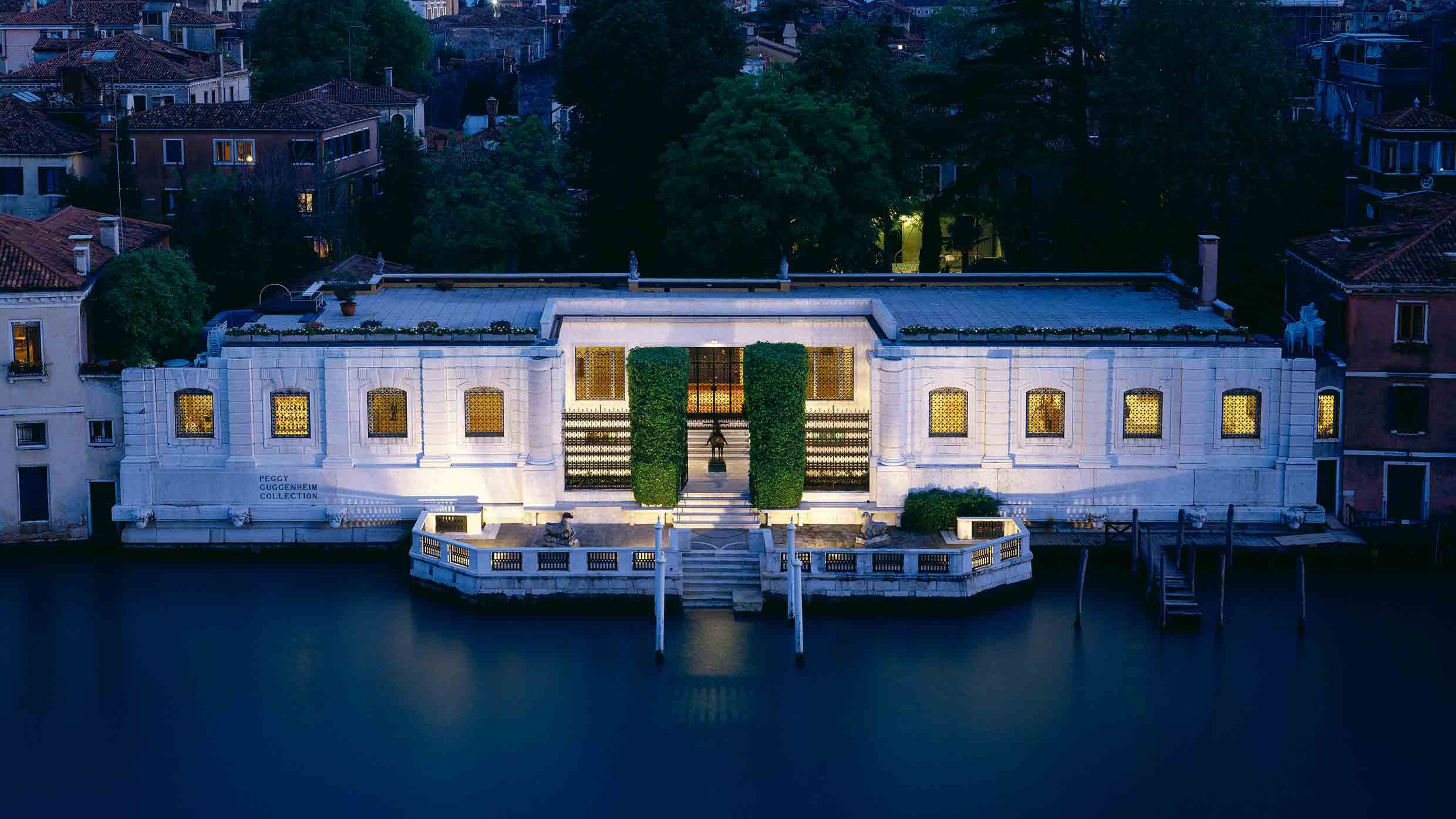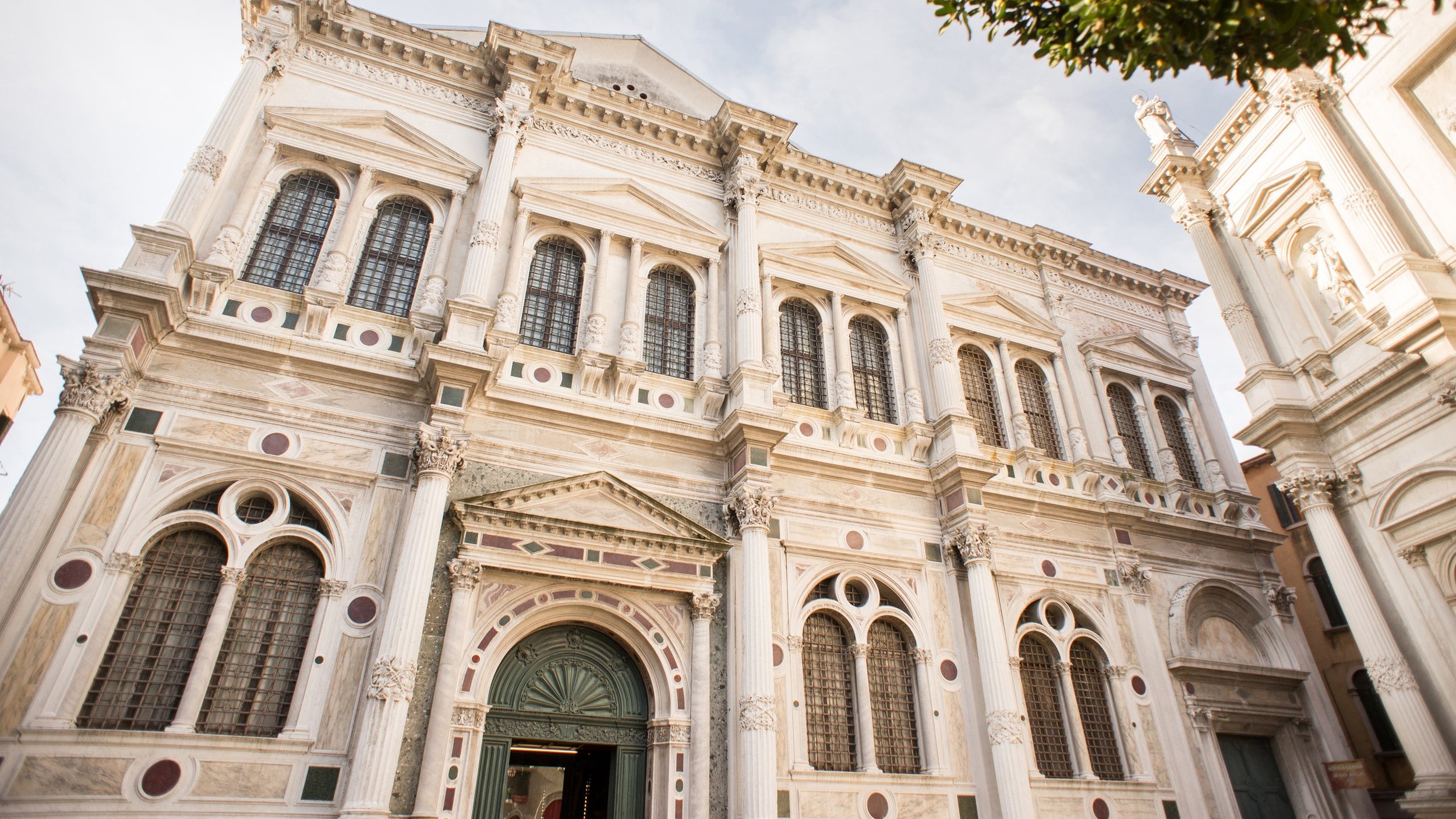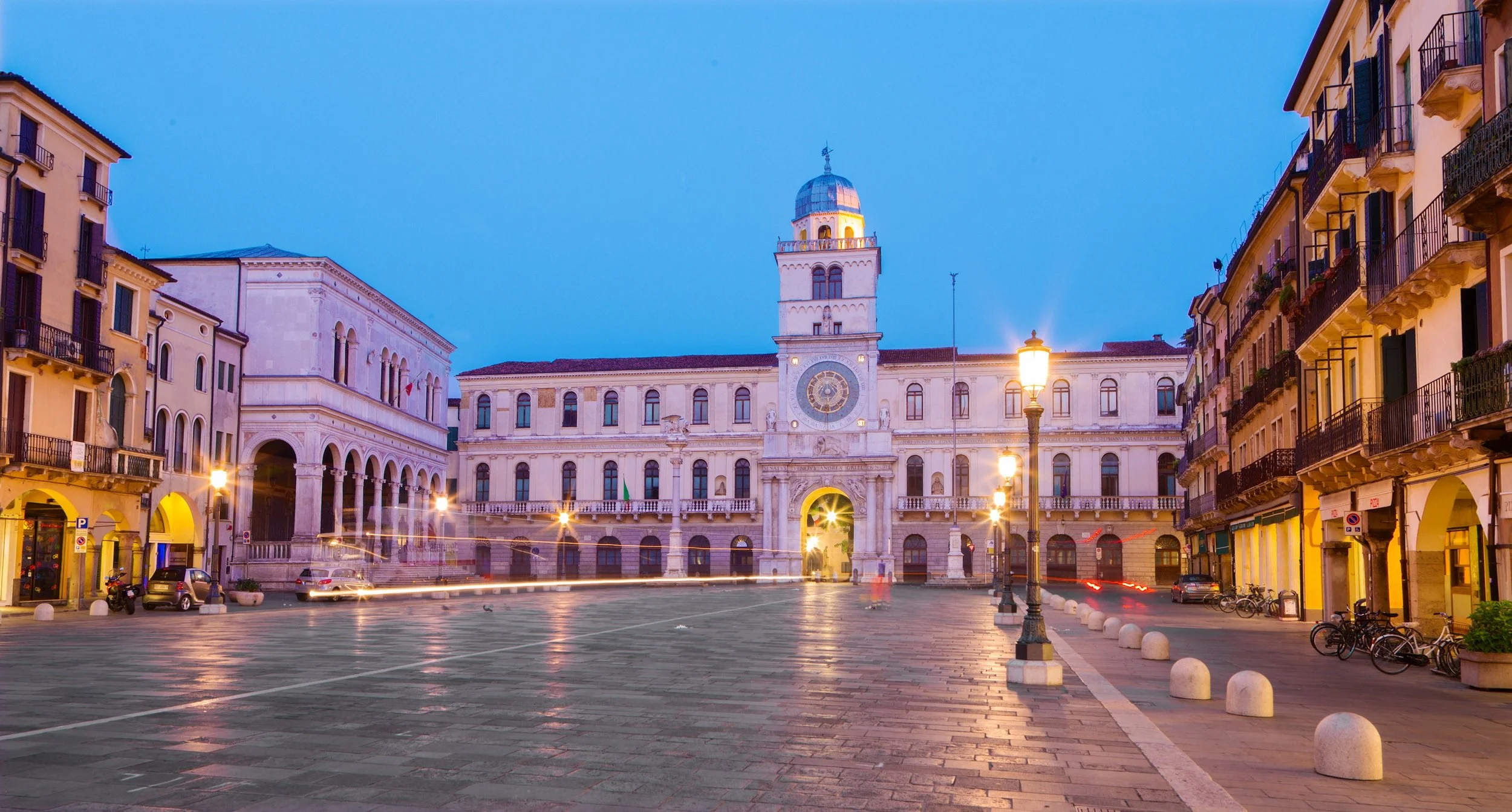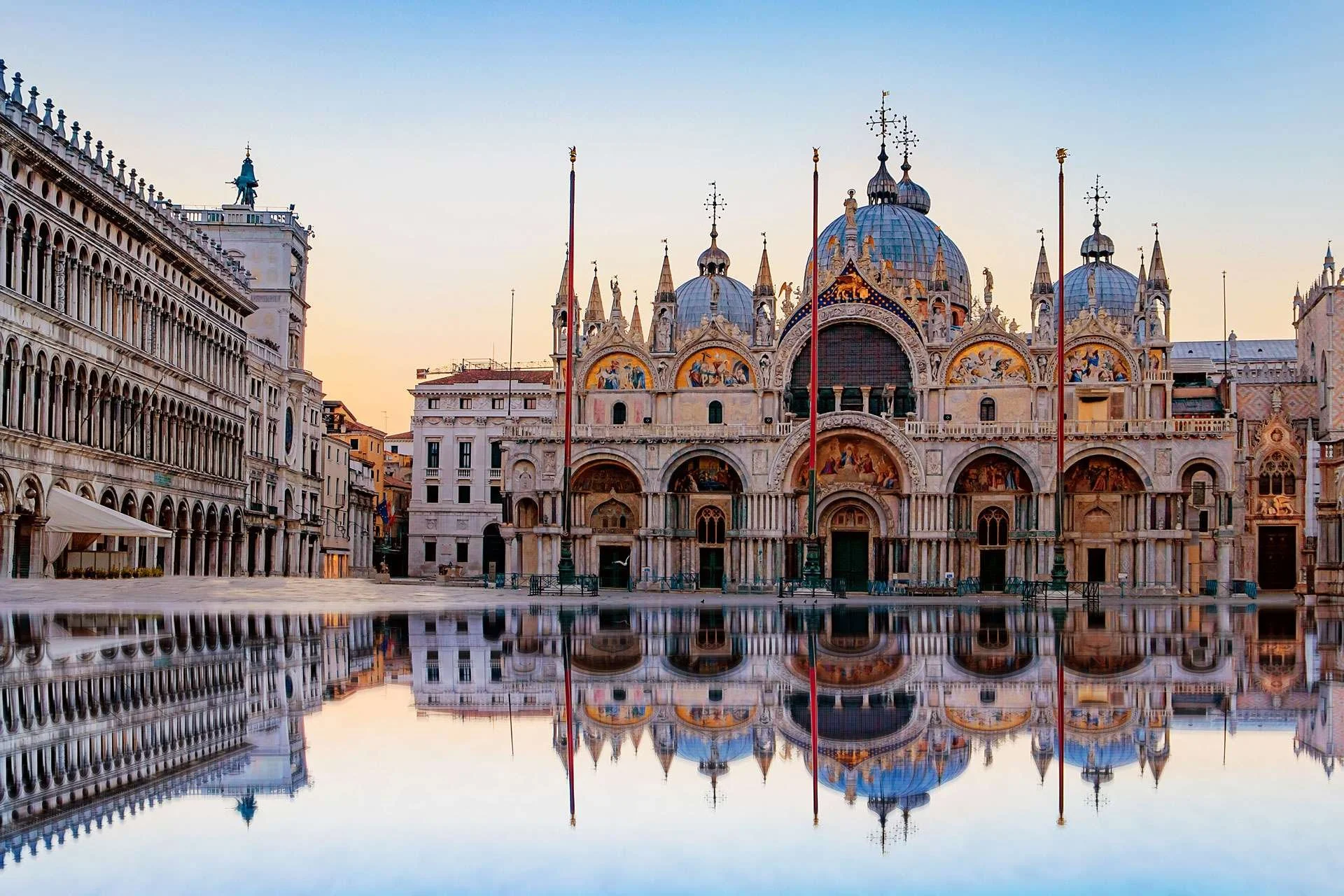CULTURAL SITES
From Churches, to Galleries and Museums there are plenty cultural sites to explore in Veneto.









-

Piazza San Marco
Is a monumental square of architectural perfection. The buildings overlooking the square were built in different eras, from the Renaissance to the nineteenth century: some have a typically Italian elegance, others show evident oriental influences, others echo the splendor of the Austrian courts. The shape of the square is not rectangular, as it might seem when you look at it once you arrive on site: it is trapezoidal. One side is occupied by St. Mark's Basilica, the opposite by the Napoleonic Wing. The Caffe' Florian, is the most famous among the elegant places in Piazza San Marco.
-

Torre dell’Orologio
It is a Renaissance tower, also called Torre dei Mori. This palace is a masterpiece of Gothic art, it was built at the end of the sixteenth century and modified several times over the centuries. There are two elements that have made this tower famous. One is the astronomical clock with a blue and gold dial that for over 500 years has marked time, day, moon phases and zodiac signs: a masterpiece of engineering, technique and aesthetics. The other are the famous Moors of Venice, the Old Man (bearded) and the Younger: they are the two bronze statues placed on top of the tower that mark the hours by beating a bell, which have also become a symbol of the city. The place of honor, between the bell and the clock, belongs to a triumphant Lion of St. Mark.
-

Gallerie dell'Accademia
A prestigious museum that exhibits the most important collection of Venetian painting in the world, with a focus on its heyday (from the fifteenth to the eighteenth century). The 37 museum rooms are housed inside the former Church of Santa Maria della Carità and in the adjoining convent, once home to the Academy of Fine Arts. The highlights of the collection are four works considered absolute masterpieces of Western art: "The Tempest" by Giorgione, "The Pietà" by Titian, "The cycle of stories of St. Ursula" by Carpaccio and "Il Convito in casa di Levi" by Veronese.
-

Ca’ Pesaro Galleria Internazionale di Arte Moderna or Palazzo Grassi
An ornate building in Venetian Baroque style, it is home to the Gallery of Modern Art. He loves his collection of Japanese art from the Edo period, considered one of the most important in the world; it also exhibits artifacts in Burmese lacquer, Thai silver and porcelain, textiles and Indonesian puppets used in shadow theater. A duchess was the last owner of Ca' Pesaro, and it was her desire to make it a treasure chest open to visitors. con collezioni di dipinti e sculture otto-novecenteschi e i capolavori di Klimt, Chagall, Kandinsky, Klee e Matisse.
-

Palazzo Mocenigo
Residence of nobles and intellectuals now used as an exhibition venue. The museum housed in its elegant rooms is dedicated to the history of textiles and costumes. Ssplendid seventeenth-century palace, which houses the Study Center of History of Fabric, Costume and Perfume, is on the Giudecca, next to the church of Zitelle, and overlooks the Giudecca Canal. It preserves the eighteenth-century furnishings and frescoed ceilings made by Jacopo Guarana, Giambattista Canal and Giovanni Scajaro.
-

Ca’ Rezzonico ( Museum)
A magnificent palace built by a very rich Venetian family in the seventeenth century but completed by another family in 1750. Thanks to Giambattista Rezzonico, a merchant and banker of Lombard origin, the Palace has been completed. Currently inside it is possible to admire a collection of furnishings, paintings and sculptures of the Venetian eighteenth century. Among the most important works stand out the paintings by Antonio Canaletto, Francesco Guardi, Giambattista Piazzetta and the sculptures by Antonio Corradini and Andrea Brustolon. Its sumptuous rooms faithfully reproduce those of a typical noble residence of the time and are the most suitable venue for the Museum of the eighteenth century.
-

Il Ponte di Rialto
One of the symbols of the city: this majestic covered stone bridge, richly ornamented, is beautiful to admire as a whole and is also a dream location for photos with a backdrop on the Grand Canal. It is a symbol of the greatness of Venice in the heyday of the Serenissima.
-

il Palazzo Ducale
During the years of the Venetian Republic it was the Palace where the Doge was located. Doge's Palace is located right next to St. Mark's Basilica and overlooks the pier of the Doge's Palace. Characterized by a predominantly Gothic style but which also draws inspiration from Byzantine and oriental architecture, the Doge's Palace is spread over three sides and houses an elegant porticoed courtyard. Inside it is now possible to visit the Civic Museum of Palazzo Ducale which preserves works by famous Venetian masters such as Jacopo and Domenico Tintoretto, Tiziano Vecellio, Francesco Bassano, Paolo Veronese, Giambattista Zelotti and Jacopo Palma il Giovane.
-

Collezione Peggy Guggenheim
The Peggy Guggenheim Collection is among the most important museums for European and North American art of the first half of the 20th century in Italy. It is located in Peggy Guggenheim's former home, Palazzo Venier dei Leoni, on the Grand Canal in Venice.
-

Ca’ Giustinian
Built at the end of the fifteenth century, the splendid palace of Ca' Giustinian is one of the greatest examples of late Venetian Gothic. Its façade in red brick and white stone, characterized by elegant symmetries of mullioned windows and balustrades, is a real wonder and the interior is certainly no less sumptuous. Currently Ca' Giustinian houses the administrative offices of the Venice Biennale, exhibition spaces, meeting rooms, an archive of contemporary art and a laboratory for workshops and educational projects,
-

Museo Civico
Housed in a former Franciscan convent, the Civic Museum boasts the largest collection of works by Jacopo Dal Ponte (better known as Jacopo Bassano), one of the Venetian painters who marked the history of Italian art in the sixteenth century. Another famous artist to whom the museum dedicates ample space is the sculptor Antonio Canova: you can see plasters, busts, drawings on canvas that have marked his artistic career. The Museum also includes an archaeological section, a medieval one, one dedicated to the seventeenth and eighteenth centuries and one dedicated to the nineteenth century.
-

Palladio Museum
It is a museum of modern conception, which makes use of multimedia installations and visual and sound effects to involve the visitor and make him participate in the discoveries made during the research carried out by the scholars of the center. There are also the classic "museum pieces", such as the original drawings by Palladio, his books, a well-stocked photo library of his buildings and more.
-

Teatro Olimpico
The first permanent theater of the modern era: between this and the ancient theaters to which it is inspired there are centuries of performances in outdoor spaces or indoor places usually used for other functions. As in the theaters of Greek and Roman antiquity, also at the Teatro Olimpico by Palladio spectators sit on steps arranged in an elliptical shape. The real wonder, however, is the white stone background of the stage that recalls the elaborate façade of a Renaissance palace adorned with statues, columns, arches: it is a triumph of chiaroscuro, perspective games and harmonic lines. The inspiration is evidently classic, but the pomp and elegance recall princely palaces of more recent eras.
-

Piazza dei Signori
Atypical example of an Italian square lined with elegant historic buildings. Inevitably the monumental Basilica Palladiana, the top attraction of the square, steals the scene from everything else but before turning your gaze to this top attraction take a look at the other artistic wonders that surround you. You can start from the two white marble columns, which are a bit reminiscent of those of St. Mark's Square in Venice: the one with the lion of St. Mark is from the fifteenth century, the other, dominated by a statue of Christ the Redeemer, is from 1647.
-

Basilica di Sant’Antonio di Padova
Padua is an important European pilgrimage destination, and it is no coincidence that the most visited attraction after the Scrovegni Chapel is the majestic Basilica of Sant'Antonio. The church preserves the relics of St. Anthony of Padua. The religious was actually originally from Lisbon but died in 1231 in Arcella, a neighborhood close to the center of Padua, and became the patron saint of the city. The procession on June 13, the day of his death, attracts thousands and thousands of faithful from all over Europe.
-

Casa di Giulietta
The building famous throughout the world as Juliet's House is a medieval tower-house that was probably the residence of the Dal Cappello, the historic Guelph family that inspired the Capulets of Shakespearean tragedy. Although there is no historical evidence of the existence of a Juliet Capulet who lived in this house and the renovation of the house has not been very faithful to historical accuracy, the building is an attraction of international appeal, risen to a symbol of eternal love and a pilgrimage destination for all the most romantic lovers (reciprocated or not). In 1907 the municipality of Verona bought part of the building, which over time has been used as a museum to exhibit paintings and frescoes from the Middle Ages, a collection of prints and engravings depicting the famous love story and objects of common use from the Middle Ages and Renaissance. The top attraction of Juliet's house-museum, however, is the famous balcony from which, according to legend, the unfortunate protagonist of the most famous love story of all time overlooked.
-

Duomo di Verona
Just outside the ancient city, at the tip of the bend formed by the Adige, is the Cathedral of Verona or Cathedral of Santa Maria Matricolare. The cathedral is part of an architectural complex that also includes the baptistery of San Giovanni in Fonte, the church of Sant'Elena with archaeological excavations and the cloister of the canons. The exterior combines Romanesque style with Gothic elements; The interior is more sumptuous, embellished with valuable works of art.
-

Arena di Verona
Built in the first century AD, in ancient times the Arena di Verona hosted the classic shows with gladiators and was able to accommodate 30,000 spectators. Today it is the temple of Italian opera: a magnificent open-air stage for spectacular productions involving up to 150 musicians, 200 choir artists, 100 dancers and 200 extras in addition to the singers protagonists and which can be attended by 15,000 spectators. The first opera staged at the Arena was Verdi's Aida, performed in 1913 on the occasion of the centenary of the famous composer's death. It was a resounding success and since then seeing an opera at the Arena is the dream of every classical music lover.
-

Museo del Vetro, Murano
Founded in 1861, it was initially a historical archive aimed at preserving evidence of life on the island; Later expanded thanks to donations from local furnaces and the addition of a school, it became in effect a museum. The visit to the Glass Museum is a fascinating journey through the history of this eclectic material with which Venetian master glassmakers have been able to create everything, from the most commonly used objects to real works of art: starting from glass objects from the Roman era and arriving to the present day.
-

Scuola Grande di San Rocco
The Scuola Grande di San Rocco, the only one that survived the end of the Serenissima Republic and of which we can now admire the monumental headquarters. An historic and elegant architectural complex that houses a brotherhood that still exists today. You can admire more than 60 paintings in their original location including works by Giorgione and Tiepolo.
-

Teatro Romano
The Roman theater is the unmissable stop for fans of Shakespeare: here in fact takes place every year an important festival that brings to the stage the most famous works of the English playwright. It is also used for modern theater, dance and music performances. The theater is included in the visit of the Archaeological Museum of Verona.
-

The Gran Teatro La Fenice
The main opera house in Venice but also one of the most prestigious theaters in the world. Unfortunately, the theater has been hit by fires twice. The Phoenix was then "reborn" again from its ashes, after years of restoration, in 2003. On December 14 of that year, in fact, maestro Riccardo Muti opened the Inaugural Week in the rebuilt Teatro La Fenice with the Orchestra and Chorus of the Theater.
-

Basilica di San Marco
Built in 1063, it is similar in architectural structure to the ancient Basilica of the Holy Apostles in Constantinople. Byzantine, in addition to the structure, is also the tradition of mosaics that gild the interiors, covering over 8000 square meters of the walls, vaults, and domes. With its spires and Byzantine-style decorations of one of the most beautiful churches in the world. It was built in the eleventh century on the ruins of a church already dedicated to San Marco, which in turn replaced a previous chapel dedicated to San Teodoro. Centuries of history are layered in the elaborate architecture of this church: the result is a unique fusion of Roman, Venetian, and Byzantine culture. Both the façade and the interior are richly decorated with a riot of marble, mosaics, columns, and sculptures: just think that only along the façade you can count more than four hundred decorative elements
-

Museo Correr
In Piazza San Marco, is located the Correr Museum, an elegant nineteenth-century building built in the Napoleonic era that was then the seat of the Habsburg court. The refined rooms with neoclassical decorations that welcomed Austrian heads of state, military, and diplomats are now home to the Correr Museum, one of the most important museums in Venice. The original nucleus of the collection is the donation made to the city by the collector Teodoro Correr, who died in 1830, and later expanded with other private donations and acquisitions. The visit to Museo Correr is a fascinating journey into the art, history, and culture of Venice.
